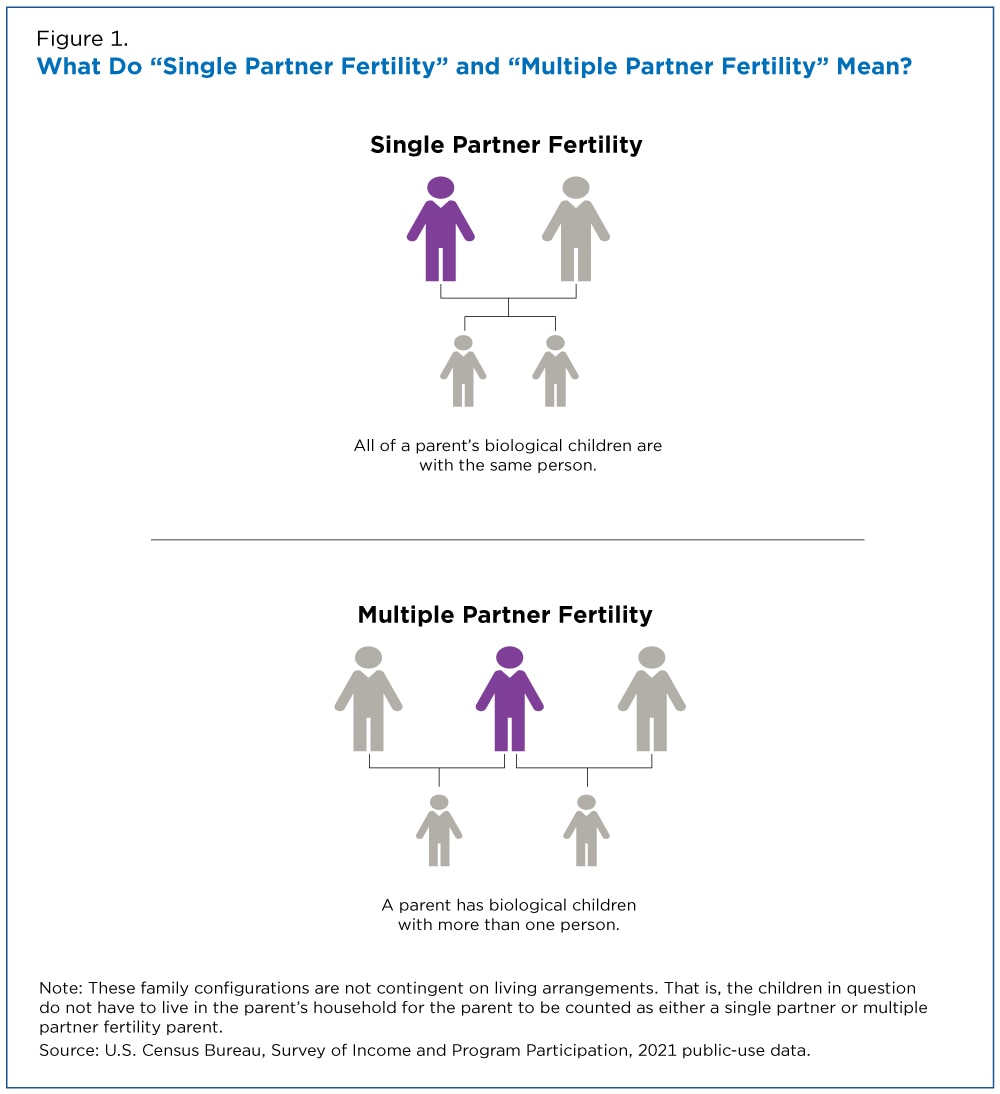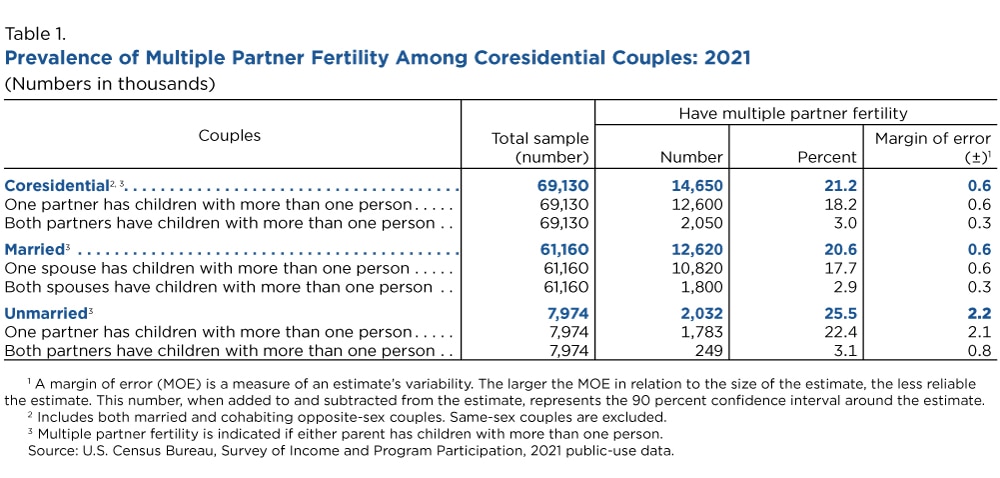Over One in Five Couples Who Live Together Have Children from Multiple Partners
More than 1 in 5 (21.2%) opposite-sex U.S. couples who lived together in 2021 had at least one partner who had children with multiple partners, according to a new U.S. Census Bureau report.
Having biological children with more than one partner, defined as multiple partner fertility (MPF), was common in many relationships, according to the Survey of Income and Program Participation (SIPP).
Married opposite-sex couples were less likely to include at least one partner who had children with other partners than unmarried opposite-sex couples (20.6% and 25.5%, respectively).
While the SIPP collects fertility information for all adults, the following analyses are limited to opposite-sex couples due to concerns related to the small number of same-sex couples in the sample.
As the first nationally representative survey to directly ask a question about that topic, the SIPP is a unique resource for understanding women’s and men’s MPF.
A new Multiple Partner Fertility Research Brief: 2021 provides an analysis of the MPF prevalence among adults generally as well as among coresidential couples, or couples who live together.
How Common Is Multiple Partner Fertility Among Opposite-Sex Couples?
Of the 69.1 million opposite-sex U.S. couples who lived together in 2021, 12.6 million (18.2%) had one partner with MPF and about 2.1 million (3.0%) had both partners with children from multiple partners.
Married and Unmarried Couples and Multiple Partner Fertility
Married opposite-sex couples were less likely than unmarried opposite-sex couples to include at least one partner who had children with other partners (20.6% and 25.5%, respectively).
Similarly, married opposite-sex couples were less likely than their unmarried peers to include only one person with children from other partners (17.7% and 22.4%, respectively).
The percentage of married (2.9%) and unmarried (3.1%) opposite-sex couples where both partners had MPF did not statistically differ.
SIPP
The SIPP is a nationally representative, longitudinal survey administered by the Census Bureau that provides comprehensive information on the dynamics of income, employment, household composition and government program participation.
For technical documentation and more information about SIPP data quality, visit the SIPP Technical Documentation webpage. The estimates presented here are subject to sampling and nonsampling error.
Related Statistics
-
Survey of Income and Program Participation (SIPP)Provides comprehensive information on the dynamics of income, employment, household composition, and government program participation.
-
Stats for StoriesNational Stepfamily Day: September 16, 2023The American Community Survey estimates that in 2021, there were 60.5M biological children, 1.4M adopted children and 2.4M stepchildren of 33.6M householders.
-
Stats for StoriesNational Child's Day: November 20, 2023In 2021, the majority (71%) of America’s 72.3M children under 18 lived with two parents and the next largest share (20.9%) lived with their mothers only.
-
Stats for StoriesNational Single Parent Day: March 21, 2024The Current Population Survey (CPS) estimates there were 9.8M one-parent households (7.3M mother only and 2.5M father only) in 2023, compared to 1.5M in 1950.
Subscribe
Our email newsletter is sent out on the day we publish a story. Get an alert directly in your inbox to read, share and blog about our newest stories.
Contact our Public Information Office for media inquiries or interviews.
-
America Counts StoryNumber of Kids Living Only With Their Mothers Has Doubled in 50 YearsApril 12, 2021Newly released Current Population Survey tables show the percentage of children under 18 who live with two parents declined since 1968.
-
America Counts StoryParents and Children Interacted More During COVID-19January 03, 2022During Covid-19 lockdowns, parents changed how they interacted with children: more dinners and reading together but fewer outings.
-
America Counts StoryOver a Quarter of Children Lived With At Least One Foreign-Born ParentFebruary 03, 2022A new report reveals that children living with at least one foreign-born parent are more likely to live with two parents than children with native-born parents.
-
EmploymentThe Stories Behind Census Numbers in 2025December 22, 2025A year-end review of America Counts stories on everything from families and housing to business and income.
-
Families and Living ArrangementsMore First-Time Moms Live With an Unmarried PartnerDecember 16, 2025About a quarter of all first-time mothers were cohabiting at the time of childbirth in the early 2020s. College-educated moms were more likely to be married.
-
Business and EconomyState Governments Parlay Sports Betting Into Tax WindfallDecember 10, 2025Total state-level sports betting tax revenues has increased 382% since the third quarter of 2021, when data collection began.
-
EmploymentU.S. Workforce is Aging, Especially in Some FirmsDecember 02, 2025Firms in sectors like utilities and manufacturing and states like Maine are more likely to have a high share of workers over age 55.






